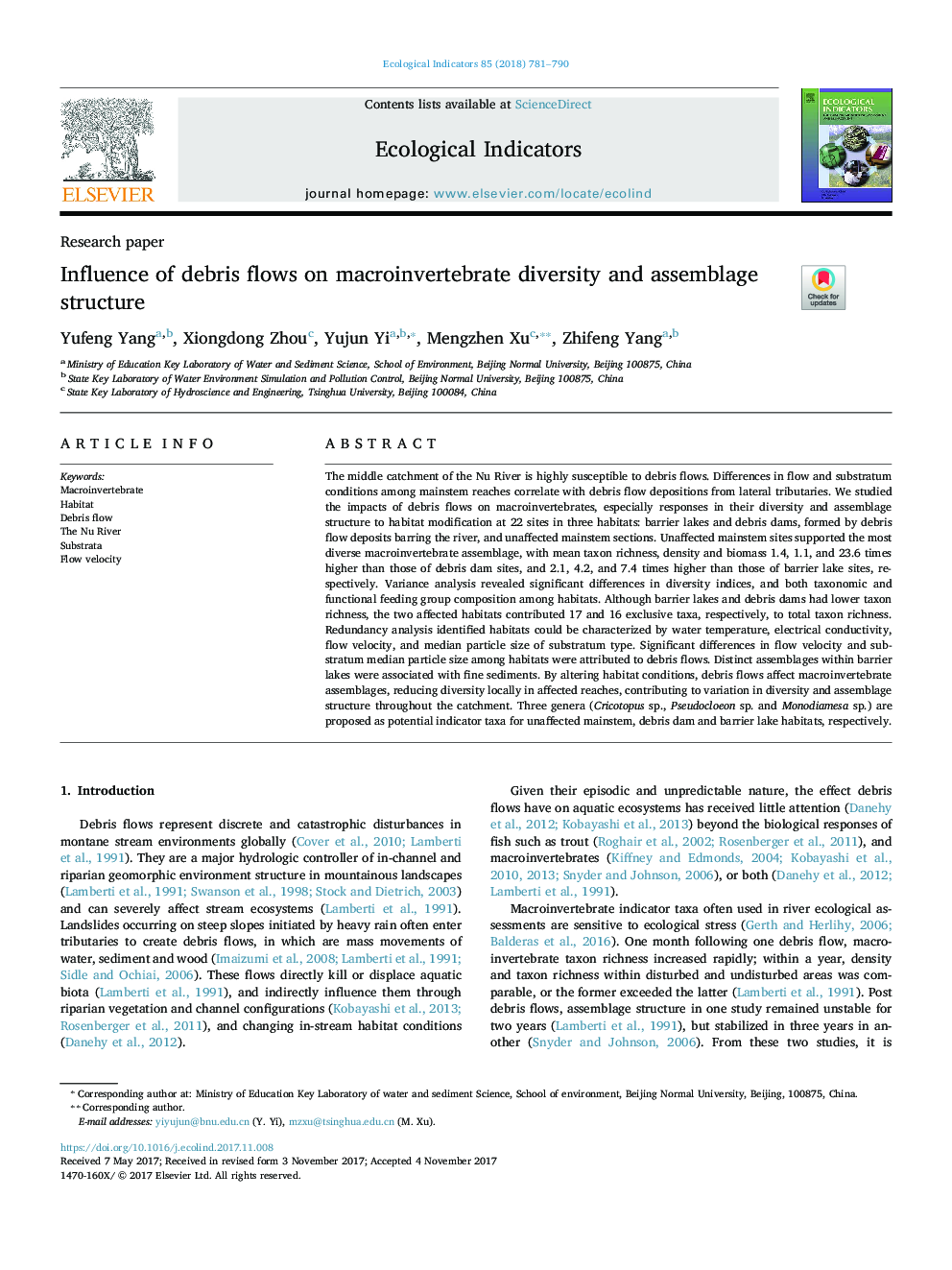| Article ID | Journal | Published Year | Pages | File Type |
|---|---|---|---|---|
| 8845751 | Ecological Indicators | 2018 | 10 Pages |
Abstract
The middle catchment of the Nu River is highly susceptible to debris flows. Differences in flow and substratum conditions among mainstem reaches correlate with debris flow depositions from lateral tributaries. We studied the impacts of debris flows on macroinvertebrates, especially responses in their diversity and assemblage structure to habitat modification at 22 sites in three habitats: barrier lakes and debris dams, formed by debris flow deposits barring the river, and unaffected mainstem sections. Unaffected mainstem sites supported the most diverse macroinvertebrate assemblage, with mean taxon richness, density and biomass 1.4, 1.1, and 23.6 times higher than those of debris dam sites, and 2.1, 4.2, and 7.4 times higher than those of barrier lake sites, respectively. Variance analysis revealed significant differences in diversity indices, and both taxonomic and functional feeding group composition among habitats. Although barrier lakes and debris dams had lower taxon richness, the two affected habitats contributed 17 and 16 exclusive taxa, respectively, to total taxon richness. Redundancy analysis identified habitats could be characterized by water temperature, electrical conductivity, flow velocity, and median particle size of substratum type. Significant differences in flow velocity and substratum median particle size among habitats were attributed to debris flows. Distinct assemblages within barrier lakes were associated with fine sediments. By altering habitat conditions, debris flows affect macroinvertebrate assemblages, reducing diversity locally in affected reaches, contributing to variation in diversity and assemblage structure throughout the catchment. Three genera (Cricotopus sp., Pseudocloeon sp. and Monodiamesa sp.) are proposed as potential indicator taxa for unaffected mainstem, debris dam and barrier lake habitats, respectively.
Related Topics
Life Sciences
Agricultural and Biological Sciences
Ecology, Evolution, Behavior and Systematics
Authors
Yufeng Yang, Xiongdong Zhou, Yujun Yi, Mengzhen Xu, Zhifeng Yang,
